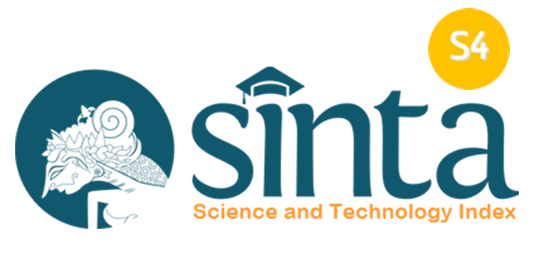SELF-MANAGEMENT TOWARDS BULLYING PREVENTION IN ADOLESCENTS: A CROSS-SECTIONAL
Downloads
Introduction: Bullying is a health problem that often affects adolescents, especially some adolescents in schools who do not have good self-management. Self-management plays an important role in improving skills in managing students' emotions, thoughts, and behavior in a positive way to prevent bullying in adolescents. The purpose of this study was to determine the relationship between self-management and bullying prevention in adolescents. Methods: This study used a descriptive design with a cross-sectional study approach. The population in this study was students at one of the public junior high schools in Lamongan Regency who were identified as having experienced bullying in the school environment, with a total of 96 students. This study was conducted on 72 adolescents using purposive sampling. Self-management assessment used a self-management scale questionnaire for students, while bullying prevention was measured using a bullying scale questionnaire. Data were tabulated and analyzed using the Spearman Rank rho test. Results: The results of statistical tests show that self-management is related to the ability to prevent bullying in adolescents with a p-value of 0.000 and a correlation coefficient (r=0.716). Conclusions: Self-management is a key component in preventing bullying in adolescents in schools. The self-management approach requires collaboration with teachers and a positive school climate.
Acosta, J., Chinman, M., Ebener, P., Malone, P. S., Phillips, A., & Wilks, A. (2019). Understanding the relationship between perceived school climate and bullying: A mediator analysis. Journal of School Violence, 18(2), 200–215. https://doi.org/10.1080/15388220.2018.1453820
Alimbekova, A., Abildina, S., Utebayev, I., & Atemova, K. (2018). Student Self-Governance as a factor for professional leadership development in the system of higher education. Espacios, 39(35), 1-8. https://doi.org/07981015
Balaji, N., Pai, B. H. K., Manjunath, K., Venkatesh, B., Bhavatarini, N., & Sreenidhi, B. K. (2021). Cyberbullying in Online/E-Learning Platforms Based on Social Networks. Intelligent Sustainable Systems, 334(2), 227–240. https://doi.org/10.1007/978-981-16-6369-720
Biswas, T., Scott, J. G., Munir, K., Thomas, H. J., Huda, M. M., Hasan, M. M., David de Vries, T., Baxter, J., & Mamun, A. A. (2022). Global variation in the prevalence of bullying victimisation amongst adolescents: Role of peer and parental supports. EClinicalMedicine, 20(March), 100276. https://doi.org/10.1016/j.eclinm.2020.100276
da Costa, E. N. F., & Kienen, N. (2021). Self-management: An analytical-behavioral Interpretation. Revista CES Psicologia, 14(2), 20–47. https://doi.org/10.21615/CESP.5234
David Obafemi Adebayo, Ninggal, M. T., & Esere, M. O. (2019). Influence of self-monitoring in preventing bullying behaviour as expressed by in-school adolescents in ilorin, Nigeria. Indian Journal of Public Health Research and Development, 10(1), 1275. https://doi.org/10.5958/0976-5506.2019.00232.8Beressa, G., Whiting, S. J., & Belachew, T. (2024). Effect of nutrition education integrating the health belief model and theory of planned behavior on dietary diversity of pregnant women in Southeast Ethiopia: a cluster randomized controlled trial. Nutrition Journal, 23(1), 1–13. https://doi.org/10.1186/s12937-023-00907-z
Farina, K. A. (2019). Promoting a Culture of Bullying: Understanding the Role of School Climate and School Sector. Journal of School Choice, 13(1), 94–120. https://doi.org/10.1080/15582159.2018.1526615
Figula, E., Margitics, F., & Pauwlik, Z. (2019). The Questionnaire on School Bullying /handbook. https://www.researchgate.net/publication/335619698
Greco, G. (2021). Multilateral teaching in physical education improves resilience and self-efficacy in adolescents and could help reduce bullying behaviors. Physical Culture and Sport, Studies and Research, 90(1), 1–9. https://doi.org/10.2478/pcssr-2021-0008
Halliday, S., Gregory, T., Taylor, A., Digenis, C., & Turnbull, D. (2021). The Impact of Bullying Victimization in Early Adolescence on Subsequent Psychosocial and Academic Outcomes across the Adolescent Period: A Systematic Review. Journal of School Violence, 20(3), 351–373. https://doi.org/https://doi.org/10.1080/15388220.2021.1913598
Hasnat, I. I., & Fakir, A. M. S. (2023). Condemned in childhood: bully victimization and labour market outcomes. Applied Economics Letters, 30(1), 51–55. https://doi.org/10.1080/13504851.2021.1971617
Hosozawa, M., Bann, D., Fink, E., Elsden, E., Baba, S., Iso, H., & Patalay, P. (2021). Bullying victimisation in adolescence: prevalence and inequalities by gender, socioeconomic status and academic performance across 71 countries. EClinicalMedicine, 41(November), 101142. https://doi.org/10.1016/j.eclinm.2021.101142
Kim, S., Spadafora, N., Craig, W., Volk, A. A., & Zhang, L. (2021). Disciplinary Structure and Teacher Support in Chinese and Canadian Schools: Examining How Authoritative Disciplinary Practices Protect Youth Involved in Bullying at School. School Mental Health, 13(3), 501–507. https://doi.org/10.1007/s12310-021-09431-z
Kota, R., & Selkie, E. (2018). Cyberbullying and mental health. In: Moreno, M., Radovic, A. (eds) Technology and Adolescent Mental Health. Springer, Cham. https://doi.org/10.1007/978-3-319-69638-6_7
Låftman, S. B., Östberg, V., & Modin, B. (2017). School climate and exposure to bullying: a multilevel study. School Effectiveness and School Improvement, 28(1), 153–164. https://doi.org/10.1080/09243453.2016.1253591
Le Menestrel, S. (2020). Preventing bullying: Consequences, prevention, and intervention. Journal of Youth Development, 15(3), 8–26. https://doi.org/10.5195/JYD.2020.945
Lukashenko, M. A. (2021). Self-management skills as a basis for the effectiveness of e-learning. Vysshee Obrazovanie v Rossii, 30(2), 61–70. https://doi.org/10.31992/0869-3617-2021-30-2-61-70
Maltseva, S. N., & Pavlova, A. Y. (2024, October). Secondary Language Identity as a Component of Engineer's Professional Training. In 2024 International Conference on Engineering Management of Communication and Technology (EMCTECH) (pp. 1-5). IEEE. 10.1109/EMCTECH58502.2023.10296999
Ministry of Health. (2019). Performance Accountability Report 2018. Journal of Community Nutrition, 1–52(9), 1689–1699.
Martino, M. L., Passeggia, R., Natale, M. R. Di, & Freda, M. F. (2022). Sinapsi Academic Self-Management Training Group to Promote Well-Being with University Students. Mediterranean Journal of Clinical Psychology, 10(August), 1–19. https://doi.org/https://doi.org/10.13129/2282-1619/mjcp-3416
Midgett, A., Doumas, D. M., & Buller, M. K. (2022). Posttraining Outcomes, Acceptability, and Technology-Based Delivery of the STAC Bystander Bullying Intervention Teacher Module: Mixed Methods Study. JMIR Formative Research, 6(8), e40022. https://doi.org/10.2196/40022
Munira, L., Liamputtong, P., & Viwattanakulvanid, P. (2023). Feeling psychologically unsafe at school and university: bullying and youth living with depression in Indonesia. International Journal of Public Health Science, 12(2), 909–916. https://doi.org/10.11591/ijphs.v12i2.22571
Newman-Carlson, D., & Horne, A. M. (2004). Bully busters: A psychoeducational intervention for reducing bullying behavior in middle school students. Journal of Counseling and Development, 82(3), 259–267. https://doi.org/10.1002/j.1556-6678.2004.tb00309.x
Pabian, S., Dehue, F., Völlink, T., & Vandebosch, H. (2021). Exploring the perceived negative and positive long-term impact of adolescent bullying victimization: A cross-national investigation. Aggressive Behavior, 48(2), 205–218. https://doi.org/https://doi.org/10.1002/ab.22006
Pratiwi, H., Islamy, M. I., & Riwanda, A. (2024). Fostering Safe Schools: Empowering Educators and Parents in the Fight Against Violence in Early Childhood Education Setting. Participatory Educational Research, 11(4), 140–159. https://doi.org/doi.org/10.17275/per.24.53.11.4
Stošić1, L., Stošić, I., & Janković, A. (2024). The Impact of Peer and Cyberbullying on Elementary School Children in the Republic of Serbia. Nternational Journal of Cognitive Research in Science, Engineering and Education, 12(2), 399–406. https://doi.org/0.23947/2334-8496-2024-12-2-399-406
Tozzo, P., Cuman, O., Moratto, E., & Caenazzo, L. (2022). Family and Educational Strategies for Cyberbullying Prevention: A Systematic Review. International Journal of Environmental Research and Public Health, 19(16), 10452. https://doi.org/10.3390/ijerph191610452
Varela, J. J., Sánchez, P. A., De Tezanos-Pinto, P., Chuecas, J., & Benavente, M. (2021). School Climate, Bullying and Mental Health among Chilean Adolescents. Child Indicators Research, 14(6), 2249–2264. https://doi.org/10.1007/s12187-021-09834-z
Wilde, N. (2024). Bullying: A group phenomenon? In Bullying in Schools: Measures for Prevention, Intervention and Aftercare (pp. 79–97). https://doi.org/10.1007/978-3-658-43576-9_5
Yang, C., Yang, Sharkey, J. D., Reed, L. A., Chen, C., & Dowdy, E. (2019). Bullying victimization and student engagement in elementary, middle, and high schools: Moderating role of school climate. School Psychology Quarterly, 33(1), 54–64. https://doi.org/10.1037/spq0000250
Young-Jones, A., Fursa, S., Byrket, J. S., & Sly, J. S. (2015). Bullying affects more than feelings: the long-term implications of victimization on academic motivation in higher education. Social Psychology of Education, 18(1), 185–200. https://doi.org/10.1007/s11218-014-9287-1
Copyright (c) 2025 Masunatul Ubudiyah, Inta Susanti

This work is licensed under a Creative Commons Attribution 4.0 International License.
Copyright Notice
1. The journal allows the author to hold the copyright of the article without restrictions.
2. The journal allows the author(s) to retain publishing rights without restrictions.
3. The legal formal aspect of journal publication accessibility refers to Creative Commons Attribution (CC BY).














